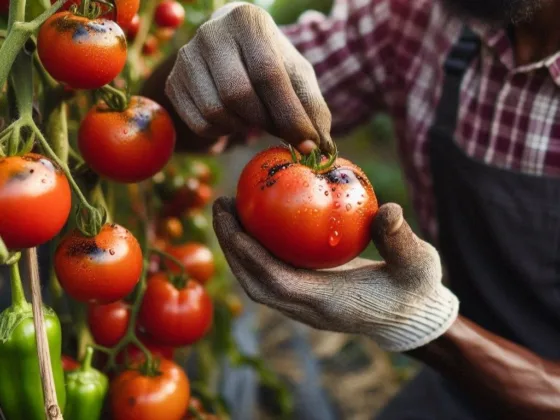Table of Contents Show
March is a vital month in the allotment calendar and kicks off the growing season.
Springtime is fast approaching, the birds are singing and our gardens are finally waking up. Yet, there’s so much work to be done! You need to prepare your soil, feed your plants, start sowing seeds, and do so much more.
With so many different allotment jobs in March, it’s easy to get overwhelmed. We understand that prepping your allotment in March is not an easy feat and that’s why we want to help you out.
In this blog, we’ve made a list of all the essential allotment jobs you have to take care of in March to get your crops thriving by springtime.
Now, let’s get started!
1) Weed Your Plot
To get your allotment ready for planting, you need to weed out your plot. This involves digging out any problem weeds, especially perennial weeds that pose a threat to your plants.
If you weed out your plot now, perennial weeds will be much easier to control throughout the rest of the year. To prevent the growth of typical weed seedlings, you will also need to prioritize hoeing.
Furthermore, ensure to dispose of any spent winter crops and plants. If they have symptoms of a disease, don’t add them to your compost heap as it could spread disease around the allotment.
2) Protect Plants from Pests
As the weather becomes warmer, pests begin to grow more active. As such, it’s crucial to implement pest control measures if you want to protect your plants.
In particular, slugs and hungry pigeons are a significant threat to brassicas or cruciferous vegetables. To prevent them from getting damaged, you could try covering them with a fleece.
Additionally, you may also spot early infestations of aphids. However, you need to be patient as they are an important food source for ladybirds, sparrows, and hoverflies. With these animals, you will be able to control the aphid population without any trouble.
Additionally, you could also look into organic or chemical pest control methods. They may be helpful in better protecting your plants from pests and ensure their health.
3) Warm the Soil and Force Early Crops
March marks the onset of spring. However, the weather can still be quite cool at times, especially during the earlier parts of the month. This is why warming the soil of your allotment is an essential step to encourage germination and promote early growth.
To get started, you can warm the soil by covering plant beds with cloches or black plastic. You could also encourage early crops of strawberries at the beginning of summer by covering a few rows with a cloche. Additionally, you could also force crops like rhubarb, by covering it with a forcer or an upturned bucket.
By forcing early crops, you would be able to extend your growing season and receive a plentiful harvest at an earlier date.
4) Feed Brassicas and Fruit
Brassicas like cabbage, kale, and broccoli as well as fruit trees and bushes, all require specific nutrients to grow. As such, March is the ideal month to provide them with these nutrients through fertilizers and compost.
Prior to planting, you will have to prepare your plant beds by adding high-quality compost. If you prefer to use well-rotted manure, you will need to ensure it’s properly rotted. If not, it could lead to damaged seedling roots.
With brassicas and fruit trees, using nitrogen-enriched fertilizer or pelleted chicken manure is highly effective. By feeding your plants in March, you ensure they have the nutrients to produce quality crops later on.
5) Sow Seeds and Get Planting
March is the beginning of the growing season for many flowers and vegetables. As such, this is the ideal time for you to begin growing seeds indoors or outdoors to guarantee sturdier crops.
With some vegetables like sow beetroot and Swiss chard, you are able to sow them directly into well-prepared soil. Provided your soil is warm enough, you could also sow seeds of peas, carrots, radishes, and spinach.
By planting your crops in March, you’re allowing your plants to establish themselves prior to the warmer weather. As a result, you are likely to receive better crop yields and healthier plant growth.
To Wrap Up
March is a very busy time for tending to your allotment.
As winter reaches its end, you will need to prepare your allotment for growing new plants. Not only do you need to prepare the soil, but you also have to begin sowing seeds and planting new crops.
Additionally, you will also need to eliminate any weeds, rake your soil, and add fertilizer, if you want to receive a plentiful harvest later on.
No doubt, it may be a lot of hard challenging work. However, once you complete all the essential allotment jobs for March, your plot will thrive and you will reap the benefits of your hard work.










